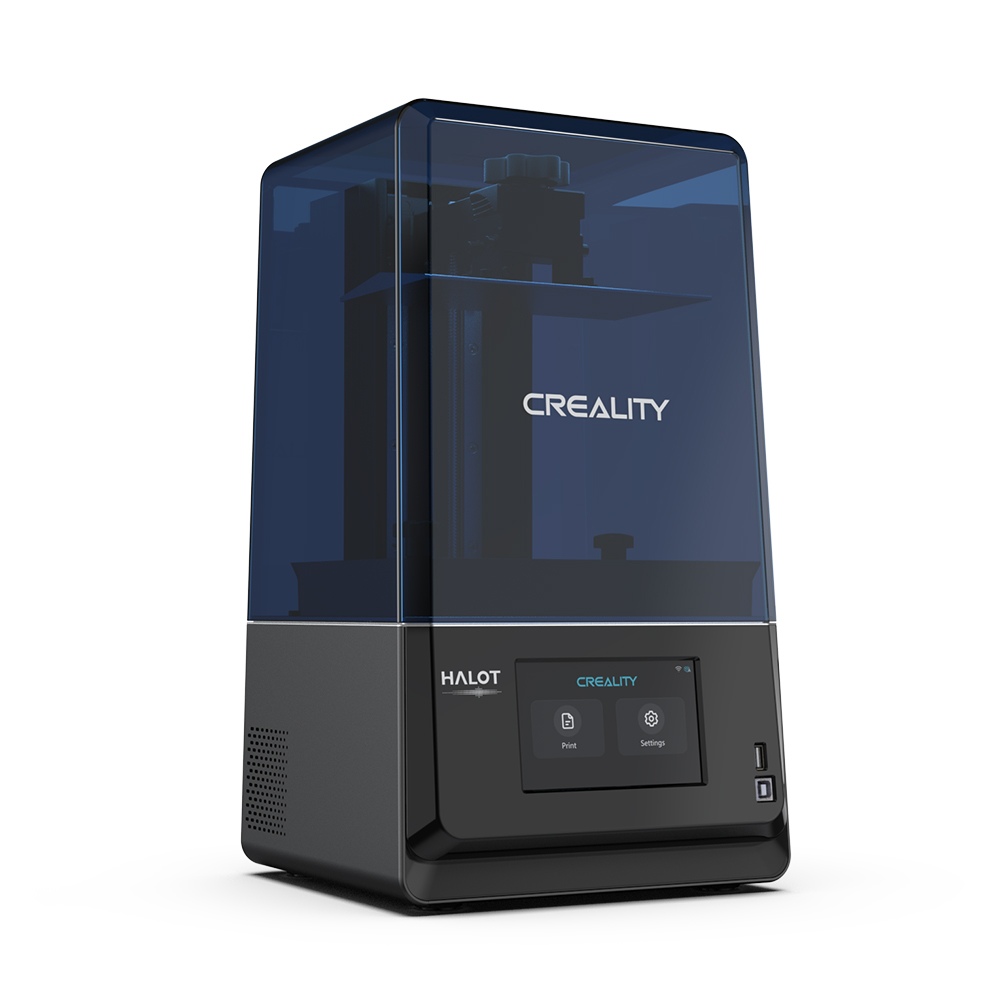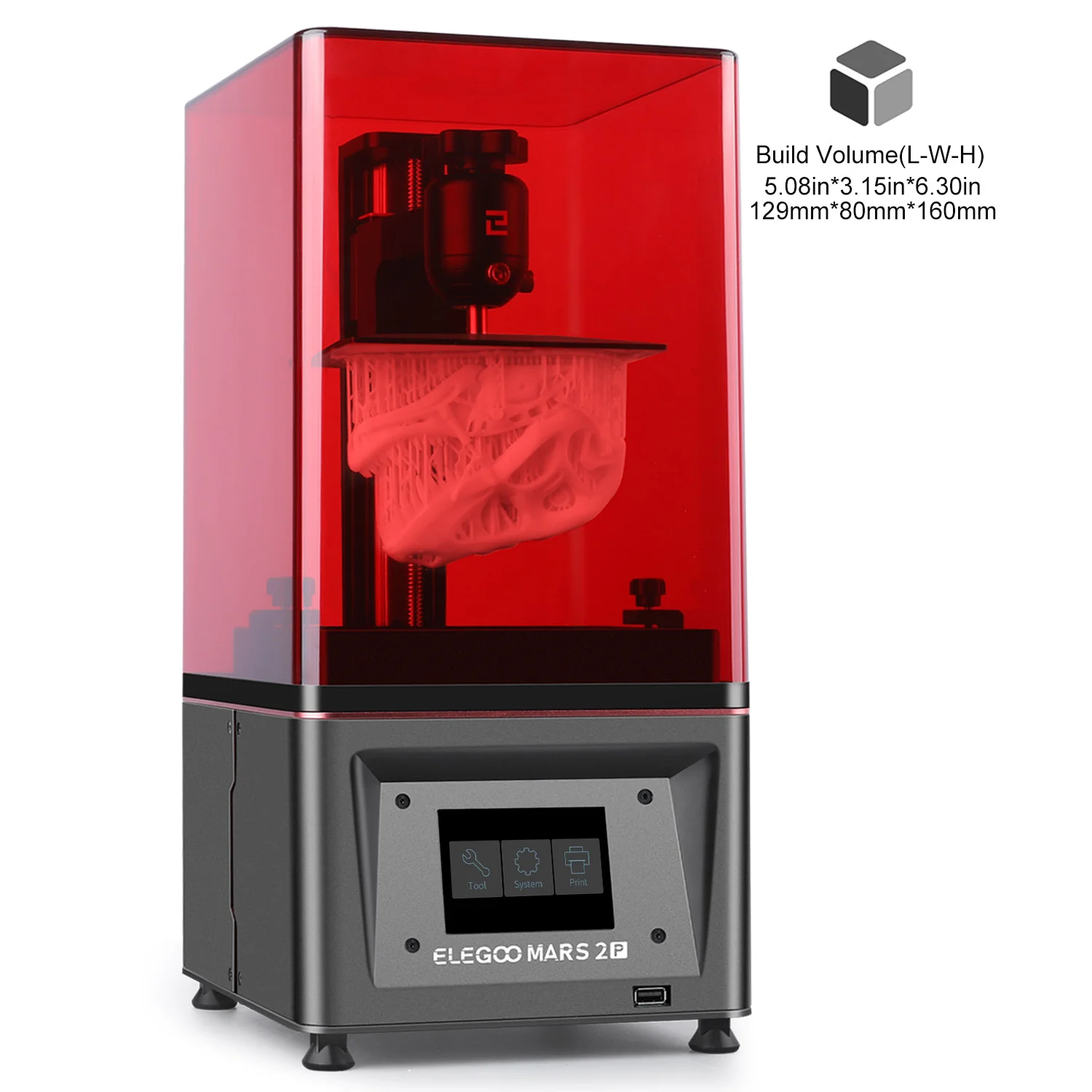Compare Halot One Plus vs Mars 2 Pro
Comparison between the best 3D printers
Choose the best 3D printer at the best price. The cheapest 3D printers are here.
Buy a 3D printer here with 3D Fila.
 |
 |
|
| Model | Halot One Plus[BUY Halot One Plus] |
Mars 2 Pro[BUY Mars 2 Pro] |
| Printing Material | Resin | Resin |
| Buy Resin for Creality 3D Halot One Plus | Buy Resin forElegoo Mars 2 Pro | |
| Estimated price | $399,00 | $145,00 |
| Manufacturer | Creality 3D | Elegoo |
| Release Year | 2022 | 2021 |
| Print Volume [mm] | 102x172x160 | 129x80x160 |
| Printer Size [mm] | 236x245x416 | 200x200x410 |
| Weight [kg] | 6,8 | 6,2 |
| Power Loss Recovery | NO | NO |
| Technology | LCD | MSLA |
| Screen Resolution | 2k | |
| Max Print Speed [s/layer] | 1 | 1 |
| Maximum Resolution [mm] | 0,01 | |
| Processor | ||
| Display | Touchscreen TFT 3,5'' | |
| Power Supply | 110/220V / 480W | |
| Connectivity | USB / Wi-Fi | USB |
| Operating systems | Windows, Mac, Linux | |
| Date of registration in the system | 2022-10-11 | 2023-08-02 |
| Release date | 2022 | 2021 |
| Extra features | Crealitys Halot-One Plus printer stands out for its 4K+ resolution that delivers sharp details and consistent surfaces. It features a fast and responsive 5-inch LCD interface, as well as easy-to-use Halot Box software. It offers Wi-Fi connectivity and remote print monitoring, as well as an integrated air filtration unit, a rare feature in this price range. The Halot-One Plus is designed for the prosumer market, combining high quality with advanced features such as Wi-Fi and air filtration. During testing, it stood out for implementing these features at an affordable cost, while maintaining functionality. It features an attractive design with a UV-resistant blue cover and a robust dual rail system for the Z-axis, ensuring smooth and consistent movements. The large LCD and high resolution of the LCD mask (4320 x 2560) are other strong points, allowing for fine details and textures in prints. | The Elegoo Mars 2 Pro is an efficient MSLA 3D printer with a 2K monochrome LCD, curing resin in 2 seconds per layer. It offers high precision, CNC aluminum body, a platform with greater adhesion and activated carbon to absorb fumes. It supports 13 languages, promoting global ease of use. It includes a 1-year warranty, 2 extra FEP films and uses COB UV LED lighting with excellent heat dissipation. The ChituBox slicer makes print preparation easy with advanced anti-aliasing function. |
| Support for multiple colors and materials (AMS and CFS) | NO | NO |
Notes * |
||
| Cost-benefit | 8 / 10 | 8 / 10 |
| Hardware | 1.2 / 10 | 0.5 / 10 |
| Tela | . | . |
| Print volume | 3 / 10 | 3 / 10 |
| Performance | 9 / 10 | 9 / 10 |
| [BUY Halot One Plus] | [BUY Mars 2 Pro] |
Conclusion |
| In comparing the Halot One Plus and the Mars 2 Pro 3D printers, both models offer impressive features tailored to different user needs, but they stand out in various aspects that influence their overall value for potential buyers. The Halot One Plus is positioned as a prosumer model with its advanced 4K+ resolution, larger print volume, and integrated air filtration system—features that enhance the printing experience, especially for those focusing on high-detail projects. It provides Wi-Fi connectivity, which allows for remote monitoring, a significant advantage for users looking for ease of access and workflow efficiency. However, this model comes at a higher price point, reflecting its advanced specifications and utility. On the other hand, the Mars 2 Pro stands out for its affordability while still delivering strong performance with its 2K resolution and solid build quality. The rapid curing time of 2 seconds per layer is a notable feature that appeals to users who prioritize speed without sacrificing print quality. The Mars 2 Pro is well-suited for hobbyists or newcomers to 3D printing due to its reasonable price and user-friendly features, making it an excellent entry-level option. Ultimately, the choice between these two printers depends on the user’s specific needs and budget. The Halot One Plus is ideal for those seeking higher resolution and advanced functionality, while the Mars 2 Pro offers great value for those looking for solid performance at a lower cost. Users should consider what aspects, such as resolution, connectivity, and additional features, are most critical to their 3D printing projects to make the best decision. |

